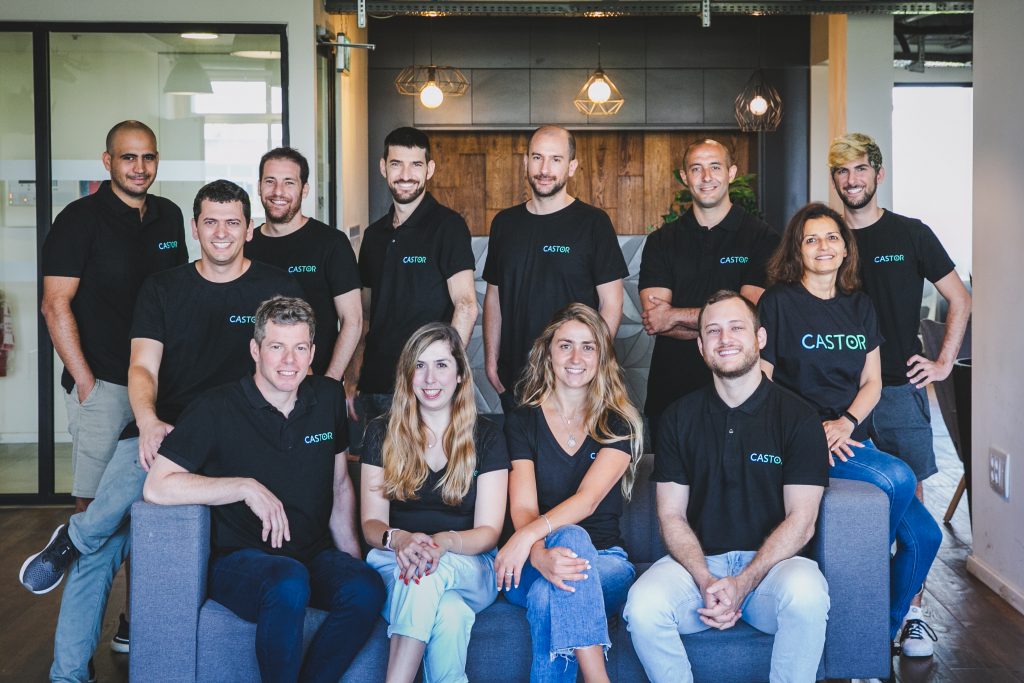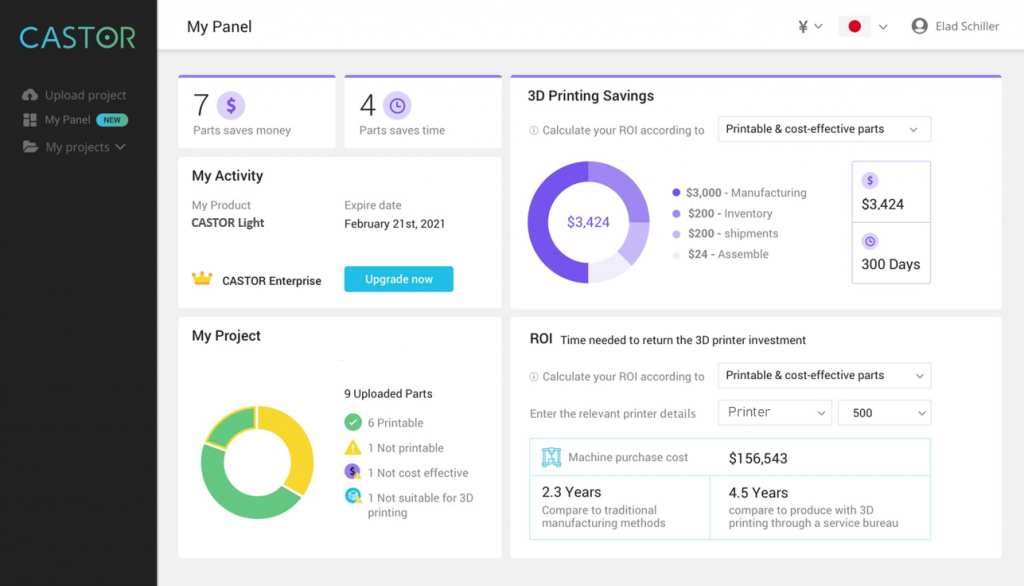The nominations for the 2021 3D Printing Industry Awards are now open. Who do you think should make the shortlists for this year’s show? Have your say now.
Additive manufacturing software developer CASTOR has raised $3.5 million via a seed funding round led by global digital document and printing firm Xerox.
The investment, which was also supported by new backer Spring Ventures, as well as existing investors Evonik Venture Capital, Jeremy Coller, TAU Ventures and Chartered Group, will help fund the wider roll-out of CASTOR’s cost analysis tools.
Xerox’s contribution to the funding round sees it continue its foray into the additive manufacturing space, following the launch of its first liquid metal 3D printer, the ElemX, which was formally unveiled in February 2021.
“We are grateful for this opportunity to collaborate with additive manufacturing industry leaders and add layers of intelligence and automation to help engineers realize the full potential of AM,” said Omer Blaier, CASTOR’s Founder and CEO. “The investment will allow us to grow, and further address the needs of large enterprises.”

CASTOR’s AM analysis tools
Founded by Blaier and the firm’s now-CTO Elad Schiller in 2017, CASTOR specializes in developing software tools that help manufacturers identify the opportune time to switch to 3D printing. With its entry-level ‘Light’ package, for instance, the company advises users on the optimal material or technology to deploy when creating a given part, before offering to refer them to production service providers if needed.
Since 2019, CASTOR has also offered its more nuanced White Label platform, featuring personalized lead generation tools, designed specifically to address the needs of proficient 3D printing users, and just last year, the company attempted to take the depth of its platform further still, with its finite element analysis-equipped Enterprise program.
Capable of automatically identifying cost reduction opportunities, the firm’s latest software now provides users with the opportunity to engage in deeper technical analysis, and benefit from re-design (DfAM) recommendations. At around the same time, in November 2020, CASTOR also indicated its willingness to work with industry partners, collaborating with Nexa3D to launch the ‘Ximplify’ cost analysis tool.

The move not only saw the firms merge their decision support and digital twin softwares into a cohesive new offering, but reflected an opportunity for CASTOR to work with Nexa3D to fine tune its platform. In the past, the company has benefited similarly from a partnership with Evonik, in which it has gained financial backing as well as priceless advice on which materials suit each use-case, and the needs of its individual clientele.
With Xerox’s backing, Blaier now believes that CASTOR has another opportunity to work closely with an emerging force in the 3D printing sector to better inform its cost analysis tools, while Nimrod Cohen, a Managing Partner at long-term investor TAU Ventures, sees the deal as a milestone given the global stature of the firm’s backer.
“We’re excited to accompany and support CASTOR since the company’s first steps,” added Cohen. “Omer, Elad, and the team are succeeding in realizing their vision by selling their solution to some of the largest customers in the world. They’re gaining a significant indication of trust, with Xerox having now joined the respected list of investors who support CASTOR.”
“I’m convinced that CASTOR is only at the beginning of realizing its potential and that it is heading for another leap forward.”
Xerox’s 3D printing interests
Although Xerox has traditionally traded in 2D rather than 3D printing, it outlined plans to “participate” in additive manufacturing, after missing its revenue expectations in October 2018. Shortly afterwards, the company acquired liquid metal 3D printer manufacturer Vader Systems in February 2019, before attending its first Formnext later that year.
At the show, the company revealed that market conditions were ideal for making its “play in high-volume end-use parts” and expanding beyond its core business. The firm also showed off its proprietary AI-based software, polymer powders for SLS printers, a high-speed ‘Multi Nozzle Extrusion’ system and liquid metal machines.
In the two years since, Xerox has continued its expansion into 3D printing, and was reported to be lining up a speculative $27 billion bid for HP in November 2019, but the move was eventually scrapped in April 2020, due to COVID-related concerns.
More recently, the company has incorporated Vader System’s technologies into its first printer, the ElemX, which is being tested at the Naval Postgraduate School within military applications. Through its investment in CASTOR, the firm may now also be seeking entry to the professional market, thus the companies’ ongoing relationship could offer a glimpse into where Xerox’s expansion is headed next.
The nominations for the 2021 3D Printing Industry Awards are now open. Who do you think should make the shortlists for this year’s show? Have your say now.
To stay up to date with the latest 3D printing news, don’t forget to subscribe to the 3D Printing Industry newsletter or follow us on Twitter or liking our page on Facebook.
For a deeper-dive into additive manufacturing, you can now subscribe to our Youtube channel, featuring discussion, de-briefs and shots of 3D printing in-action.
Are you looking for a job in the additive manufacturing industry? Visit 3D Printing Jobs for a selection of roles in the industry.
Featured image shows the CASTOR team as of 2021. Photo via CASTOR.



